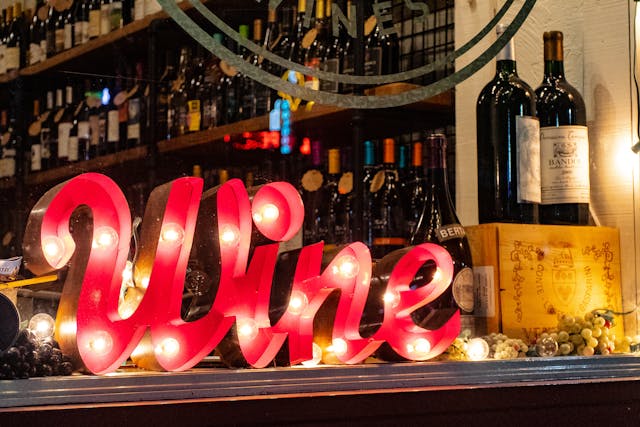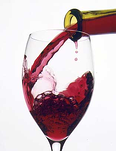Transform your wine bar with these trendy decor ideas that will impress your customers and enhance their overall experience.
Elevate with Statement Lighting
One way to create a trendy atmosphere in your wine bar is to elevate it with statement lighting. Install unique and eye-catching light fixtures that will serve as focal points in the space. Consider using chandeliers, pendant lights, or wall sconces with intricate designs or interesting materials. These lighting fixtures will not only provide adequate illumination but also add a touch of elegance and sophistication to your wine bar.
Another option is to incorporate LED lighting that can change colors. This will allow you to create different moods and ambiances depending on the time of day or the type of event you are hosting. Whether you choose bold and dramatic lighting or soft and romantic illumination, statement lighting will definitely make your wine bar stand out.
Create a Cozy Wine Nook
Make your wine bar feel warm and inviting by creating a cozy wine nook. Designate a corner or a small area in your bar where customers can relax and enjoy their drinks in a more intimate setting. Use comfortable seating options such as plush couches, armchairs, or even cozy booths. Add soft throw pillows and blankets to create a cozy and welcoming atmosphere.
To enhance the coziness factor, consider installing a fireplace or a faux fireplace. The flickering flames and the warmth it provides will create a relaxing and comforting ambiance. Additionally, you can decorate the wine nook with shelves or racks to display your wine collection, creating a focal point that adds to the overall aesthetic of the space.
Embrace Industrial Chic
Embracing an industrial chic style can give your wine bar a trendy and modern look. Incorporate elements such as exposed brick walls, metal accents, and reclaimed wood furniture. These materials not only add visual interest but also create a unique and edgy vibe.
Consider using metal bar stools or chairs with distressed finishes. These seating options not only provide a rustic charm but also add an industrial touch to the overall decor. Pair them with wooden tables or countertops to create a balanced and cohesive look.
To further enhance the industrial chic style, you can hang black and white photographs or vintage wine-related posters on the walls. These nostalgic elements will add personality to your wine bar and create a conversation starter for your customers.
Incorporate Greenery and Botanical Elements
Bring nature indoors by incorporating greenery and botanical elements into your wine bar decor. Plants not only add a refreshing touch but also create a calming and relaxing atmosphere. Choose plants that thrive indoors and require minimal maintenance, such as succulents, ferns, or snake plants.
Place potted plants on shelves, tables, or even hang them from the ceiling to add a touch of greenery throughout the space. You can also create a living wall by installing vertical planters filled with various types of plants. This will not only serve as a unique decor element but also act as a natural air purifier.
In addition to live plants, you can also incorporate botanical prints or artwork on the walls. These can be vintage botanical illustrations or modern abstract representations of plants and flowers. The combination of real plants and botanical elements will create a fresh and vibrant ambiance in your wine bar.
Personalize with Customized Decor Pieces
Make your wine bar truly unique by personalizing it with customized decor pieces. Consider working with local artisans or artists to create one-of-a-kind artwork or signage that reflects your wine bar's identity and style. This can be a custom-made neon sign with your bar's name or logo, or a mural that depicts wine-related imagery.
You can also personalize your wine bar with customized wine racks or shelves. These can be designed to fit your space perfectly and showcase your wine collection in an organized and visually appealing way. Additionally, you can have personalized wine glasses or coasters made with your bar's logo or a special design that represents your brand.
By incorporating customized decor pieces, you not only add a personal touch to your wine bar but also create a memorable and immersive experience for your customers.

 Herb-infused spirits. Whether they be whiskies, vodkas or gins are gaining herb-infused drinks are gaining in popularity. Expect gin, especially, to continue to make a splash as both large producers such as Bombay and a slew of new micro distilleries continue infuse this old stalwart with fresh and interesting botanicals.
Herb-infused spirits. Whether they be whiskies, vodkas or gins are gaining herb-infused drinks are gaining in popularity. Expect gin, especially, to continue to make a splash as both large producers such as Bombay and a slew of new micro distilleries continue infuse this old stalwart with fresh and interesting botanicals. Seasonal and flavored beers. While nothing new, seasonal and/or flavored beers are starting to gain traction.
Seasonal and flavored beers. While nothing new, seasonal and/or flavored beers are starting to gain traction. Value. After several years of economic recession, consumers have acquired a taste for value wines. They are seeking bang for the buck—not cheap inferior wines, but good, well-balanced, flavorful wines at an affordable price. With many of these wines coming from Spain and South America, expect Spanish, Chilean and Argentinian wines to continue to grow in popularity.
Value. After several years of economic recession, consumers have acquired a taste for value wines. They are seeking bang for the buck—not cheap inferior wines, but good, well-balanced, flavorful wines at an affordable price. With many of these wines coming from Spain and South America, expect Spanish, Chilean and Argentinian wines to continue to grow in popularity.

